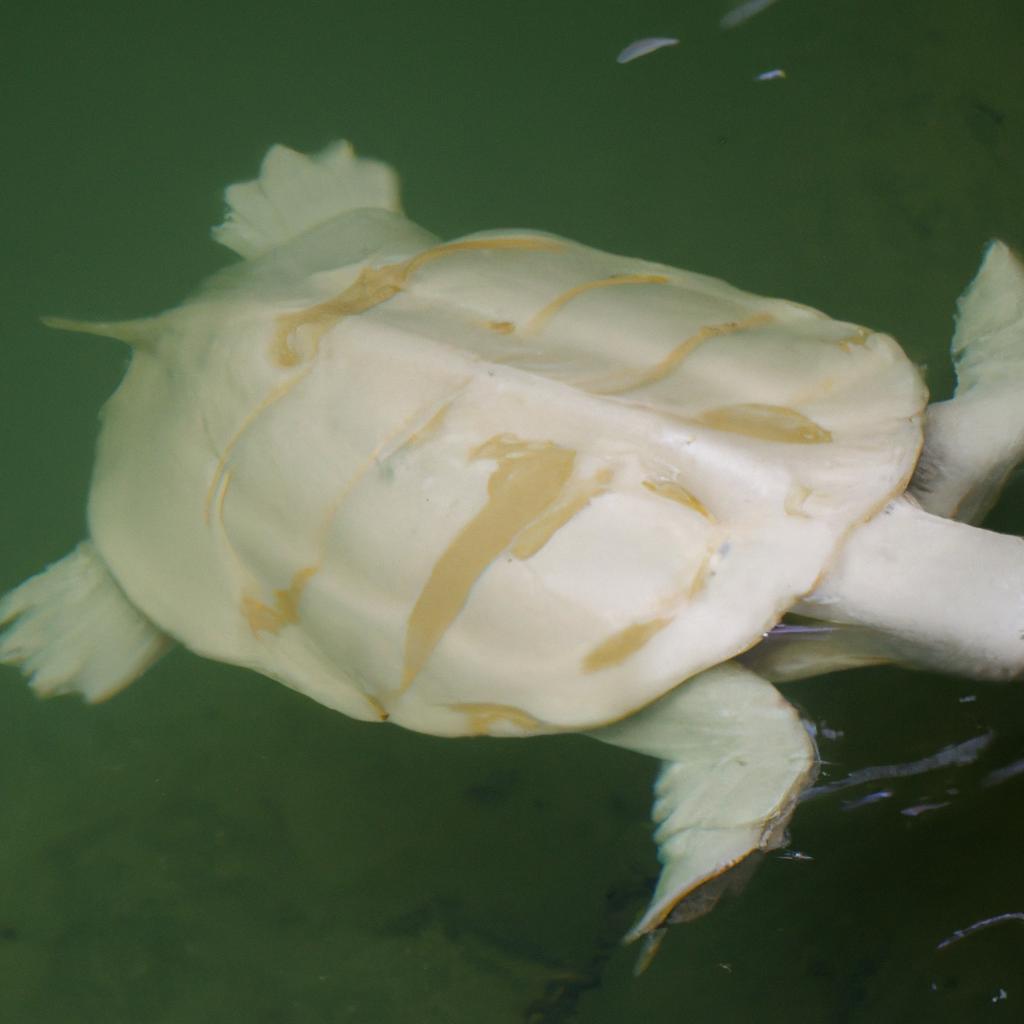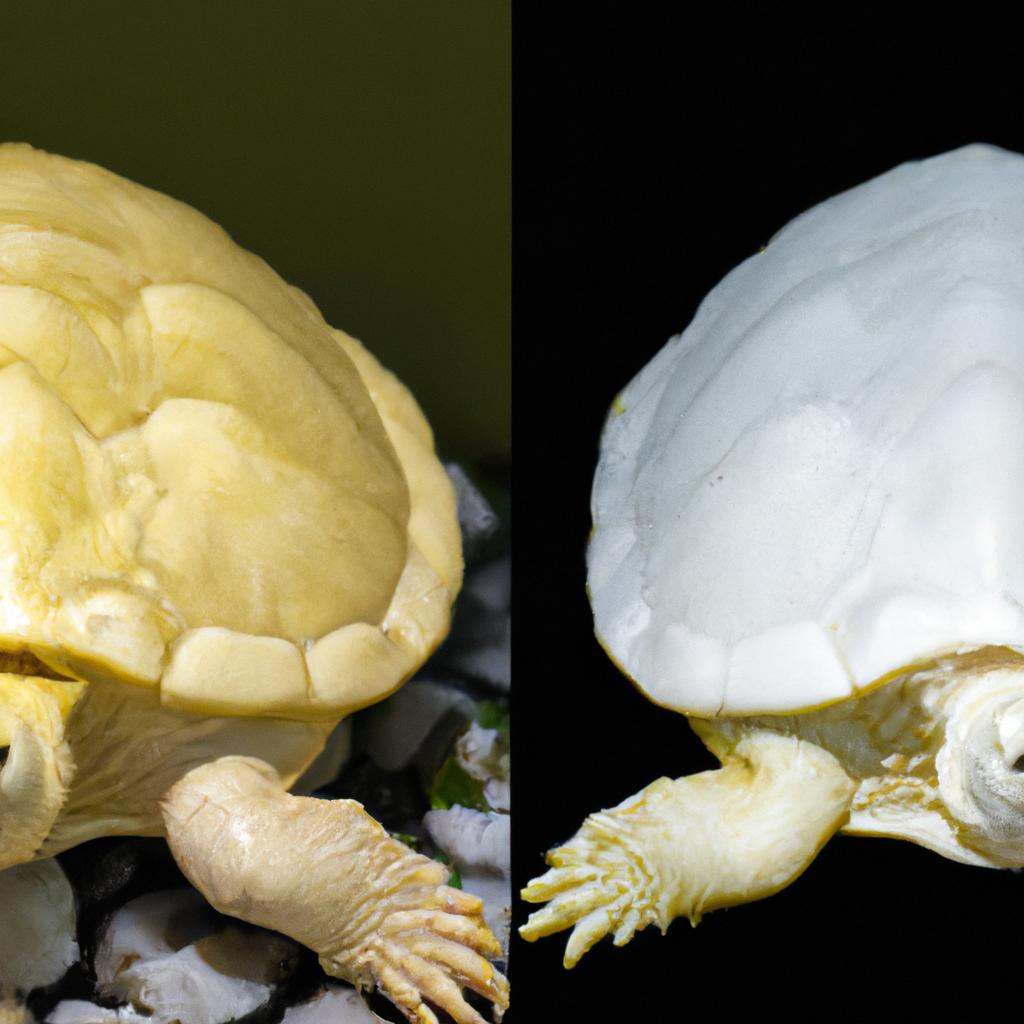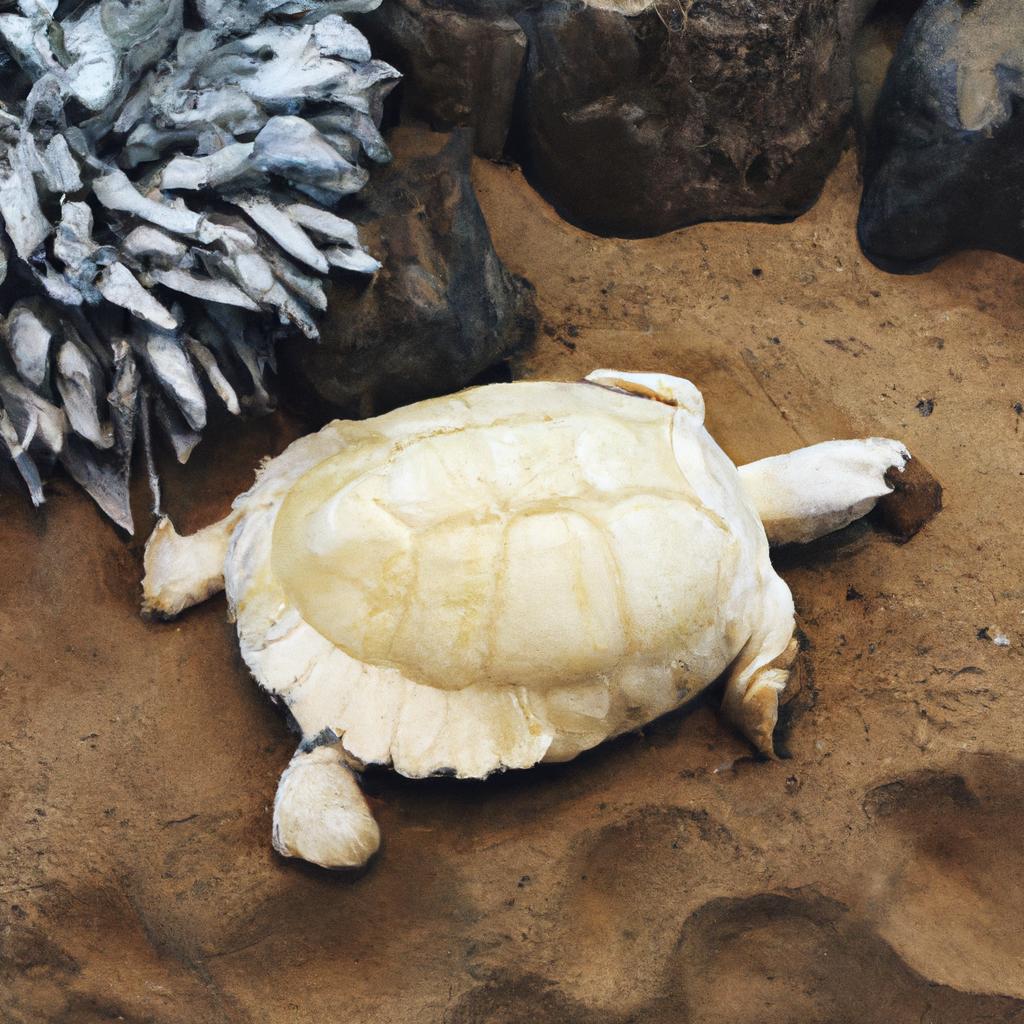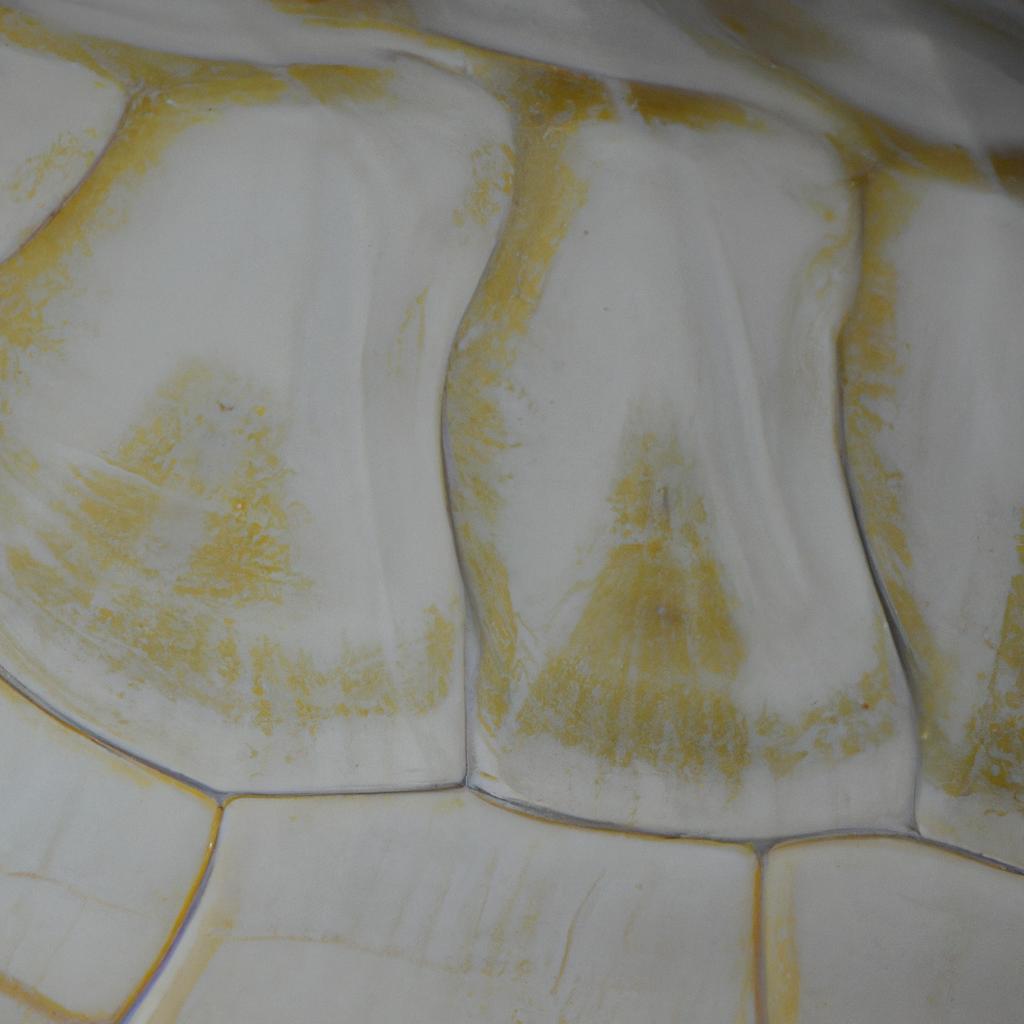
Albino turtles are an extraordinary and rare sight in the wild. They possess a unique feature: their lack of pigmentation, which gives them a distinct white or yellowish coloration. These extraordinary creatures can be found among various species, including the red-eared slider, the green sea turtle, and the loggerhead turtle. Their captivating appearance has enticed both scientists and nature enthusiasts alike.
The Unique Characteristics of Albino Turtles
Physical Appearance
Albino turtles stand out from their non-albino counterparts due to their distinctive coloring. The absence of melanin, responsible for pigmentation in their skin, eyes, and shell, results in their white or yellowish appearance. Their eyes, in particular, display hues of pink or red, while their shells exhibit lighter shades and occasionally patterns of lighter and darker spots.
Albino turtles share all the physical characteristics of their non-albino counterparts. They possess four legs, a long tail, and a protective shell. With sharp claws and a beak-like mouth, they skillfully catch and consume their food.
Behavior and Habitat
Albino turtles behave no differently than their non-albino counterparts. Most of their time is spent in the water, where they hunt for food, find mates, and lay their eggs. Additionally, like regular turtles, they rely on basking in the sun atop rocks or logs to regulate their body temperature.
You can find albino turtles in various habitats, including freshwater ponds, lakes, rivers, and even oceans. Species such as the green sea turtle travel vast distances to lay their eggs.

The Causes of Albinoism in Turtles
Albinoism in turtles can be attributed to genetic mutations or environmental factors.
Genetic Mutation
Genetic mutations occur when there is a change in the DNA sequence responsible for skin, eye, and shell pigmentation. These mutations can be inherited, increasing the likelihood of producing albino offspring.
Environmental Factors
Environmental factors, such as pollution, temperature changes, or exposure to UV radiation, can also induce albinoism in turtles. These factors influence the development of melanin in the turtle embryo, resulting in a lack of pigmentation.
It is worth noting that despite their distinct appearance, albino turtles are at risk of extinction due to a combination of genetic mutations and environmental threats, which severely impact their survival in the wild.
The Threats to Albino Turtles

Albino turtles face similar threats to their non-albino counterparts, including habitat loss, pollution, and hunting. However, due to their standout appearance, they are more vulnerable to predators as they are easily spotted.
Habitat loss resulting from human activities poses a significant threat to albino turtles. Wetland destruction, water pollution, and the construction of dams and roads have severely diminished their habitat. This loss of habitat hinders their ability to find suitable locations for mating, egg-laying, and foraging.
Pollution of water bodies is another critical threat to albino turtles. Chemicals from fertilizers, pesticides, and industrial waste degrade water quality and harm the turtles’ health. Plastic pollution presents another grave problem, as turtles often mistake plastic waste for food, leading to ingestion and potential death.
Hunting exacerbates the decline of turtle populations, including albino turtles. Some cultures consider turtle meat a delicacy, while others use their shells for ornamental purposes, driving the demand for hunting.
Conservation Efforts

To protect albino turtles and their non-albino counterparts, numerous conservation efforts have been implemented. These initiatives encompass habitat preservation, pollution control, and anti-hunting laws.
Habitat conservation aims to safeguard wetlands, rivers, and oceans from activities that harm turtle populations. By ensuring suitable areas for mating, egg-laying, and foraging, this approach protects the turtles’ way of life.
Pollution control focuses on reducing pollution in water bodies to preserve the turtles’ health. Regulation of chemical usage and waste disposal curtails the impact of pollution on turtle populations.
Anti-hunting laws play a crucial role in protecting turtles from being hunted for their meat, shells, and eggs. These laws make it illegal to hunt turtles and enforce penalties for violators.
Conservation efforts have yielded positive results in improving turtle populations, including albino turtles. However, ongoing dedication is necessary to secure the survival of these extraordinary creatures. TooLacks urges everyone to contribute to conservation efforts and raise awareness about the significance of preserving their natural habitats.
Albino Turtles: Symbols of Wonder
Albino turtles have captivated various cultures, leading to their symbolic representation.
Cultural Beliefs and Myths
Certain cultures revere albino turtles, considering them sacred. Native American tribes, for instance, believe in the healing prowess of albino turtles, using their shells for medicinal purposes. Other cultures attribute magical powers to albino turtles. In Japan, they are seen as harbingers of good luck and prosperity. Similarly, African folklore portrays albino turtles as symbols of rainmaking and fertility.
Albino Turtles in Art and Literature
Albino turtles have inspired numerous artistic creations, appearing in paintings, sculptures, and literature. Artists portray them in diverse ways, ranging from realistic depictions to abstract interpretations. As a symbol of purity, innocence, and uniqueness, albino turtles instill hope and resilience in the face of adversity.
Literature employs albino turtles as metaphors for individuality, the quest for identity, and the struggle for survival. They also symbolize the fragility of life and the need to protect endangered species.
Conclusion
Albino turtles are not only rare and unique creatures but also deserving of our utmost attention and protection. Their vulnerability arises from genetic mutations and environmental factors, which place them at risk of extinction.
Conservation efforts, encompassing habitat preservation, pollution control, and anti-hunting laws, have made a positive impact on turtle populations, including albino turtles. However, continued action must be taken to secure the survival of these remarkable creatures.
Recognizing the importance of protecting albino turtles and their habitats, TooLacks, as a website dedicated to nature, gardening, and animals, urges everyone to actively participate in conservation efforts. Together, we can make a difference, safeguard our natural world, and ensure a sustainable future for generations to come. Visit TooLacks to learn more about these extraordinary creatures and support their preservation.



